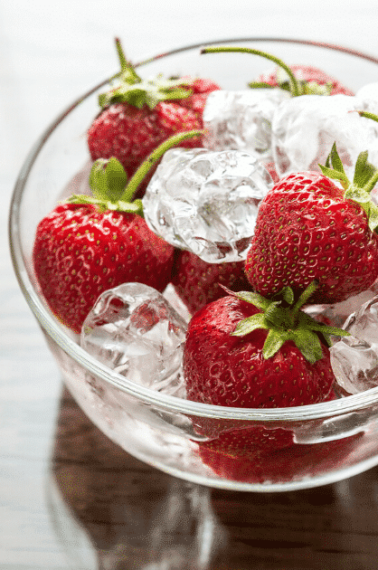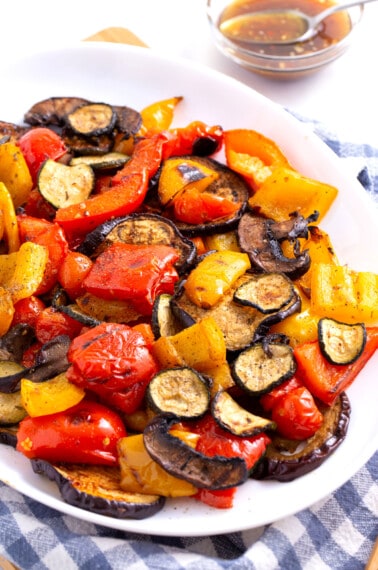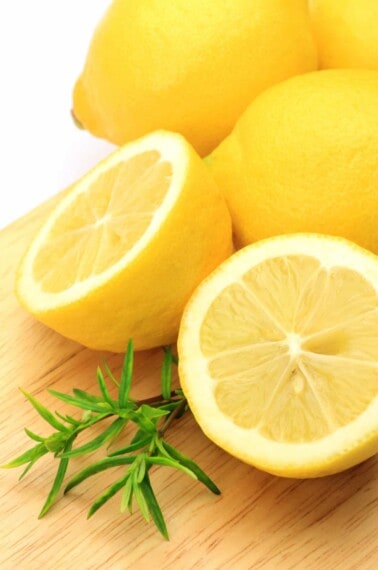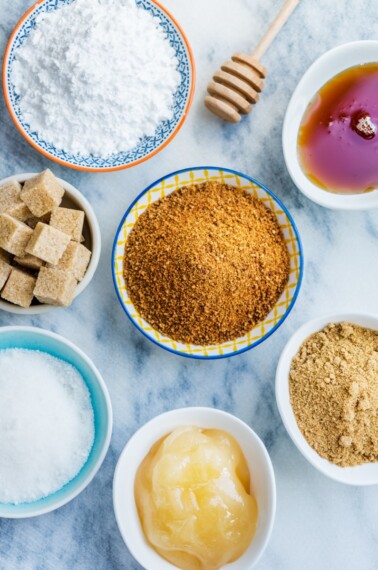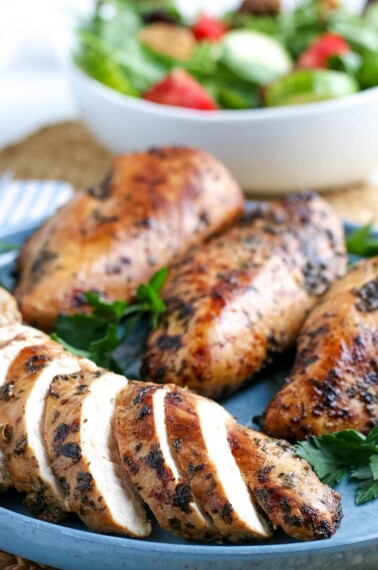Whether it’s a brand new cast iron skillet or one you’ve picked up from a garage sale, you may be wondering, “How do you clean a cast iron pan without ruining it?!” Here’s what you need to know!
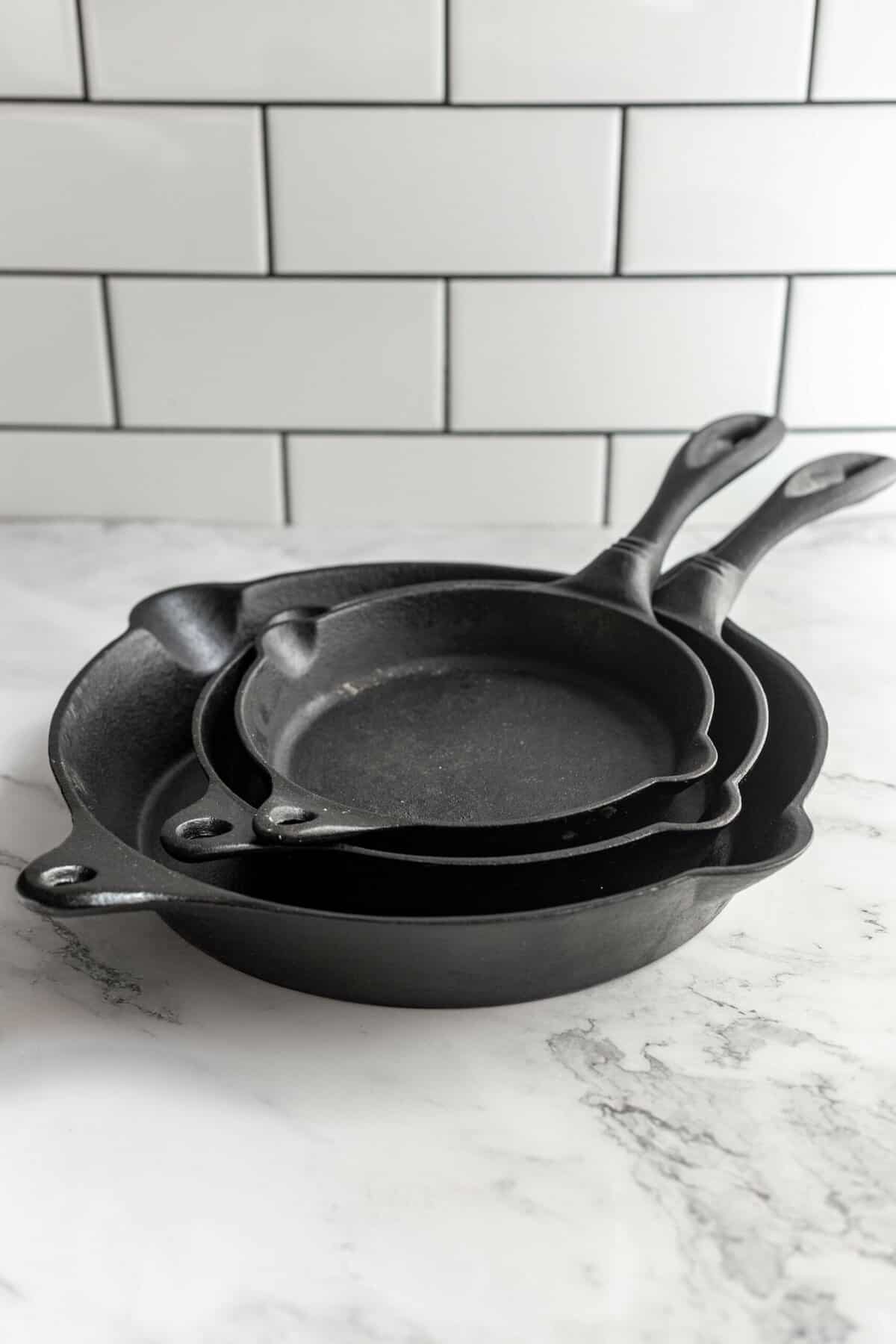
Pin this recipe now to save it for later
Pin RecipeCleaning a cast iron pan can seem more daunting than it actually is. Do you really just rinse it? If there’s food stuck on it after making Cast Iron Filet Mignon, Dutch Oven Chicken Breast or Homemade Cornbread, how do you get it off without ruining the seasoning? That nonstick surface can get pretty dirty with the stuck-on food and cooking oil grease.
Don’t worry! We know the best way to clean cast-iron cookware. The good news is, that once you get the hang of it, cleaning a cast-iron skillet is no more difficult than dealing with any other cookware—it’s just a bit different.
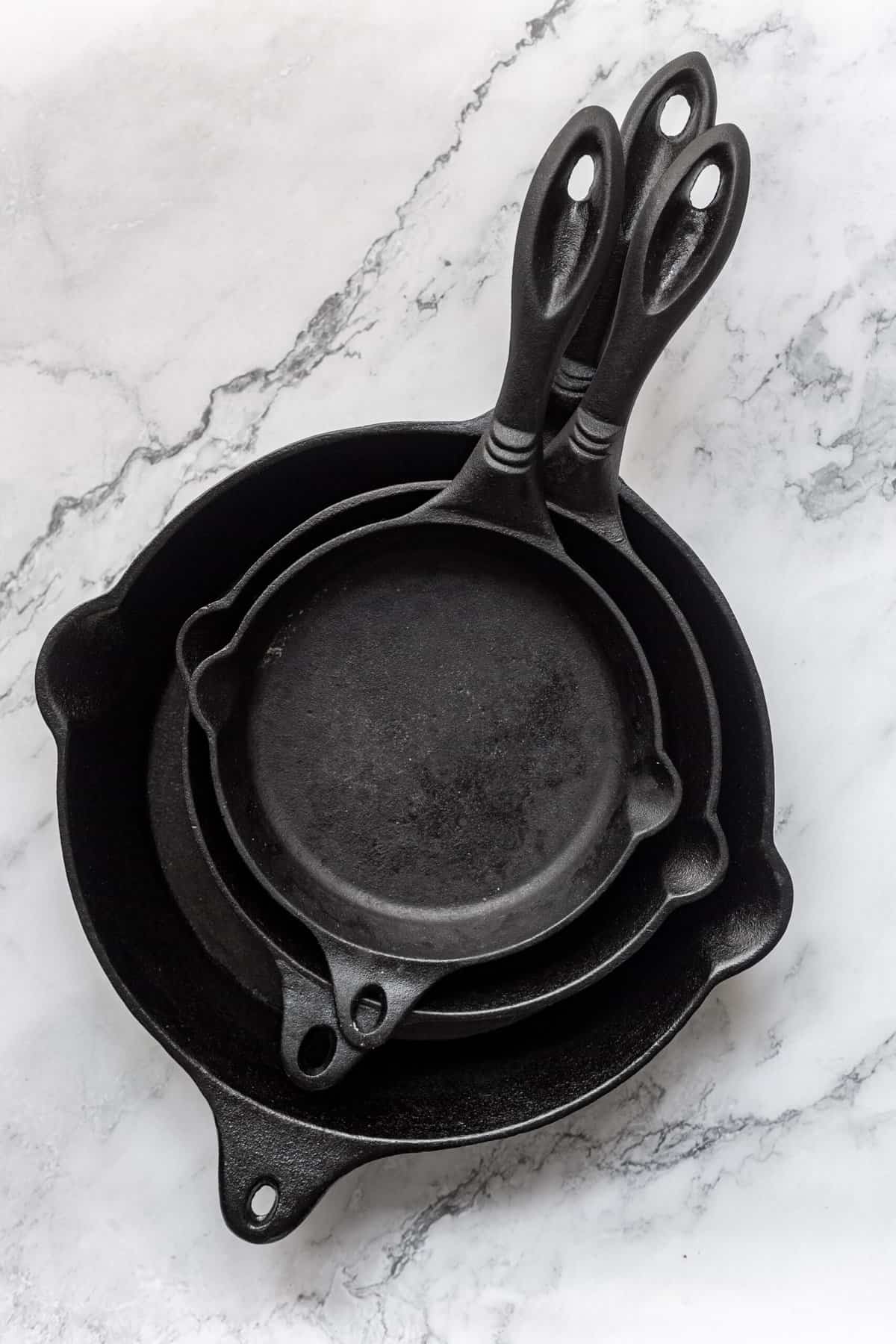
How to Season a Cast Iron Skillet
Before I jump into cleaning your cast iron cookware, I wanted to talk a little bit about seasoning your pans the right way. Seasoning will not only make your food tastier, but a properly seasoned pan will be easier to clean.
Seasoning is a layer of carbonized oil that is baked onto a cast iron pan to form a protective layer. It’s what prevents food from sticking, makes cleanup a breeze, and prevents rusting! Even pre-seasoned pans can use extra protection.
Take a look at how to properly season a cast iron pan:
- Grease the pan: Add a tablespoon or two of neutral cooking oil to the pan. I like to use olive oil, canola oil, grapeseed oil, or vegetable oil.
- Rub in the oil: Use a clean paper towel to rub the oil over the pan, coating the bottom and sides evenly. The inside of the pan should just look shiny, not greasy, and there should be no pools of oil left. You want a nice, thin coat of oil.
- Bake the pan: Place the oiled pan upside down in an oven heated to 350 degrees Fahrenheit. Bake the skillet for one hour. Baking the pan helps the oil soak into the iron, coating it evenly.
- Cool and use: Let the hot pan cool completely. Then, it is ready for the first use!
Quick Tip
The seasoning process can be repeated anytime your pan starts to look dry or when food starts to stick badly to the pan. It is actually a good idea to season your skillet after every use. Follow the steps for cleaning below. Then, give your pan a quick season, and put it away for next time!
Proper Care For a Cast Iron Skillet
First, let’s talk about some things you shouldn’t do when cleaning cast iron pans. Here are a few quick tips that will make cleaning iron skillets a whole lot simpler:
- Don’t use steel wool, metal scouring pads, or a stiff brush for scrubbing as it will scratch the cast iron surface and cause the pan to rust.
- Don’t put cast iron cookware in the dishwasher. The high heat can ruin the finish and, once again, cause the pan to rust.
- Stay away from abrasive cleaners which can harm the surface of the skillet and cookware.
- Never let your cast iron skillet soak in the sink. You can probably guess why – rust!
How to Clean a Cast Iron Pan The Right Way
Now, it is time to clean! These easy tips will help you get off those stuck bits of food while keeping the pan nicely seasoned and ready to cook.
1. Clean cast iron pans with hot water—and maybe a little soap
You should clean your skillet while it’s still warm. At this point, hot water and a sponge may be all you need to clean off any food residue.
If you need a little help, use a mild dish soap. (Yes, we promise it’s okay to use a little soap.) You can also invest in a specialized cast iron pan cleaning brush, which is designed to clean cast iron without removing the seasoning.
2. Remove stuck-on messes the right way
Still having trouble cleaning your cast iron pan? Another option is to use some salt with oil to create a paste that will remove the gunk. Add a small amount of kosher salt to the warm pan and a little water. Rub the salt around the pan using a paper towel or soft sponge. Then, rinse the pan, and wipe it clean with a dry towel.
3. Try Using Water
You can also use very hot water and a spatula or plastic pan scraper to scrape off burnt food. Pour the water into the pan, and let it simmer on the stovetop for 3-5 minutes. Allow the water to cool, and gently scrape the pan. (Avoid plastic utensils—they won’t be as effective.)
4. Dry with paper towels
Unless you want to ruin your nice dish towel, you’ll want to dry your cast iron pans with paper towels. If you see black residue, don’t worry, it’s just seasoning. Wipe the pan dry with a paper towel. Then, place it over a low burner to remove any leftover moisture before storing. This will be your best bet to avoid rust.
5. Season
I talked about seasoning a little already, but here is another way to do it. Heat the skillet on the stovetop until it’s smoking. Then, rub some oil onto the surface of the pan with a paper towel. (Avoid touching the pan with bare hands when you do this!) Buff away any excess oil with a paper towel to prevent a sticky, greasy surface from forming.
If you don’t get around to seasoning your cast iron pan every time you use it, you’ll know when food is sticking or rust is starting to form that it’s time to season. Regular maintenance of your cast iron pan will increase its non-stick properties and prevent rust.
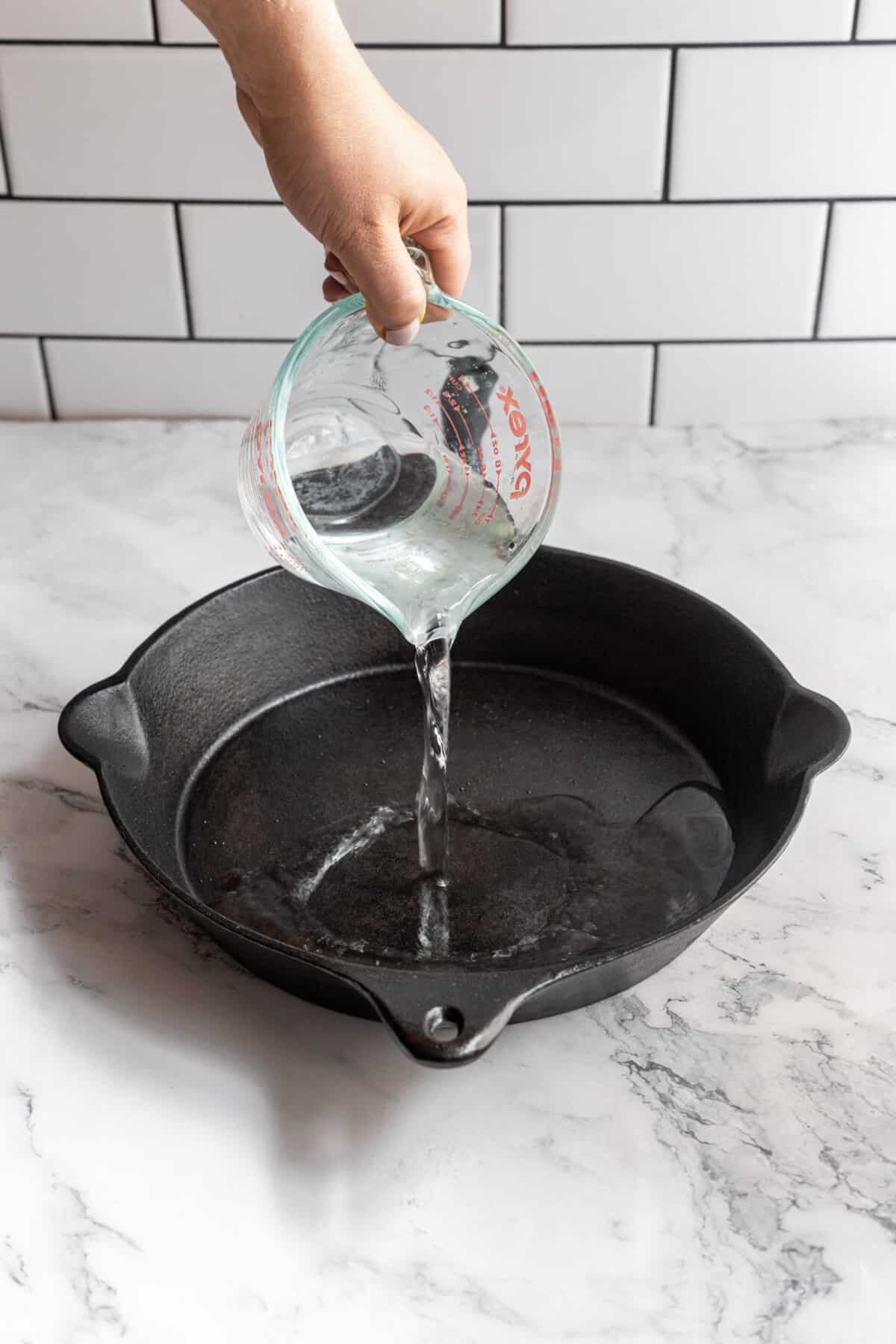
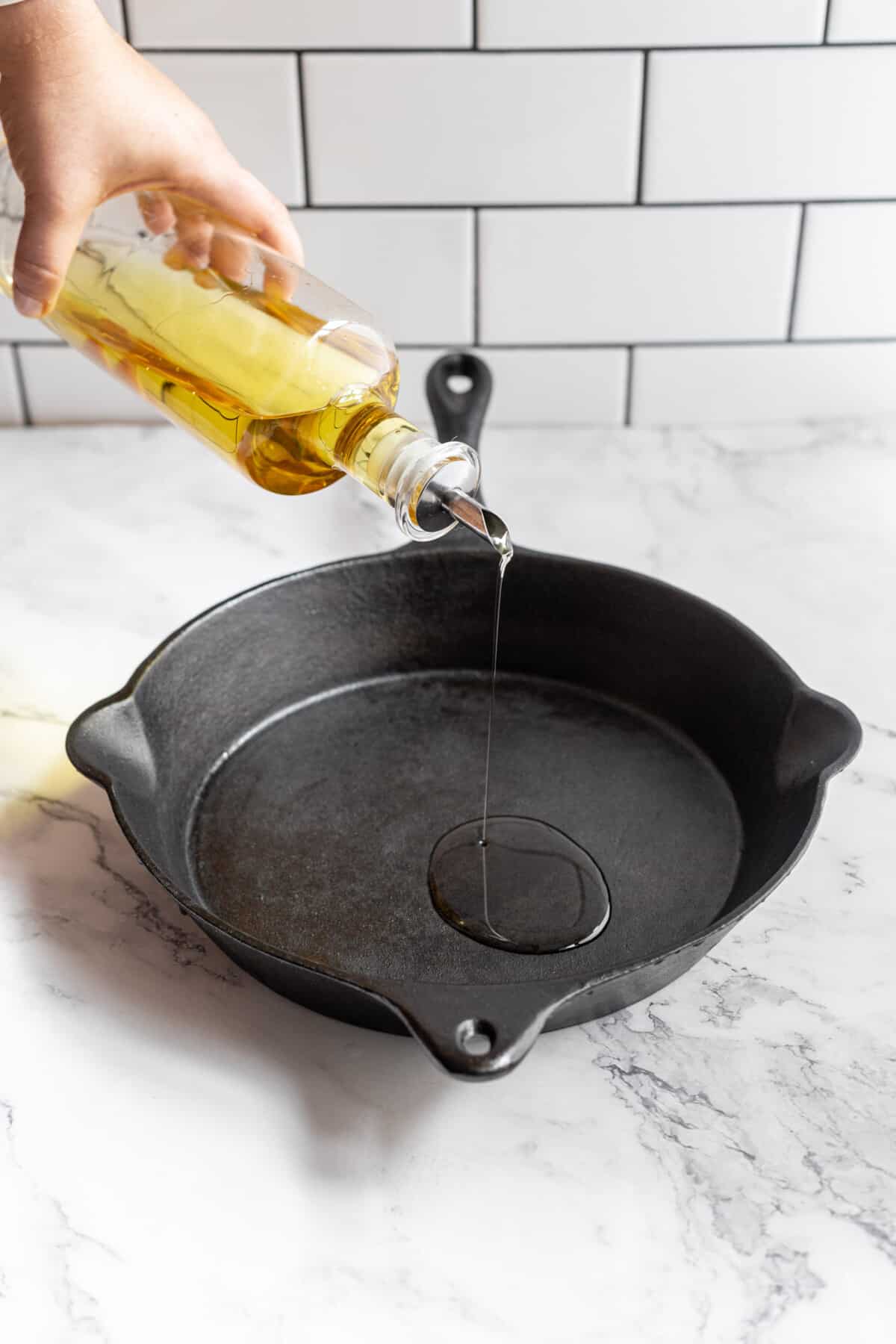
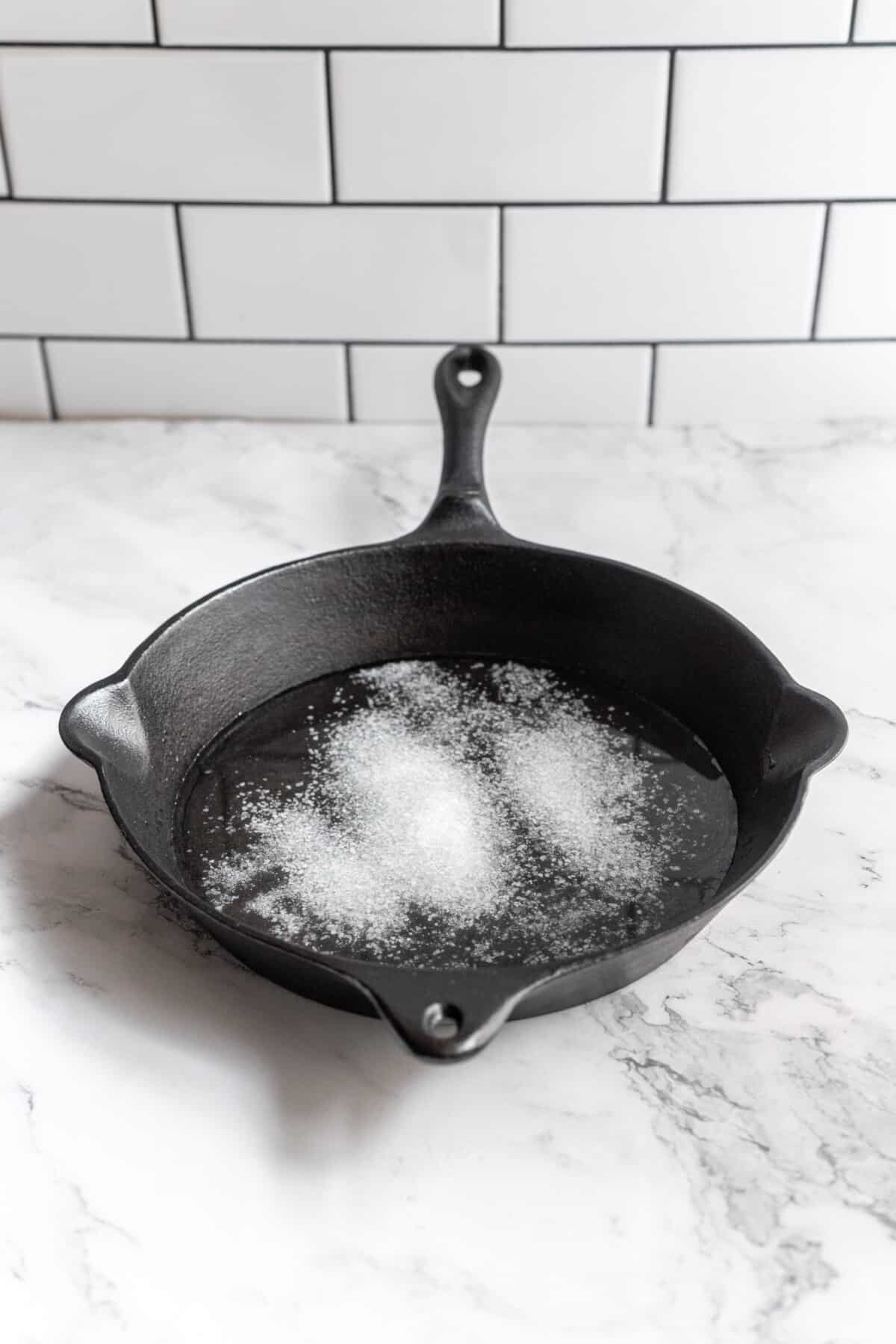
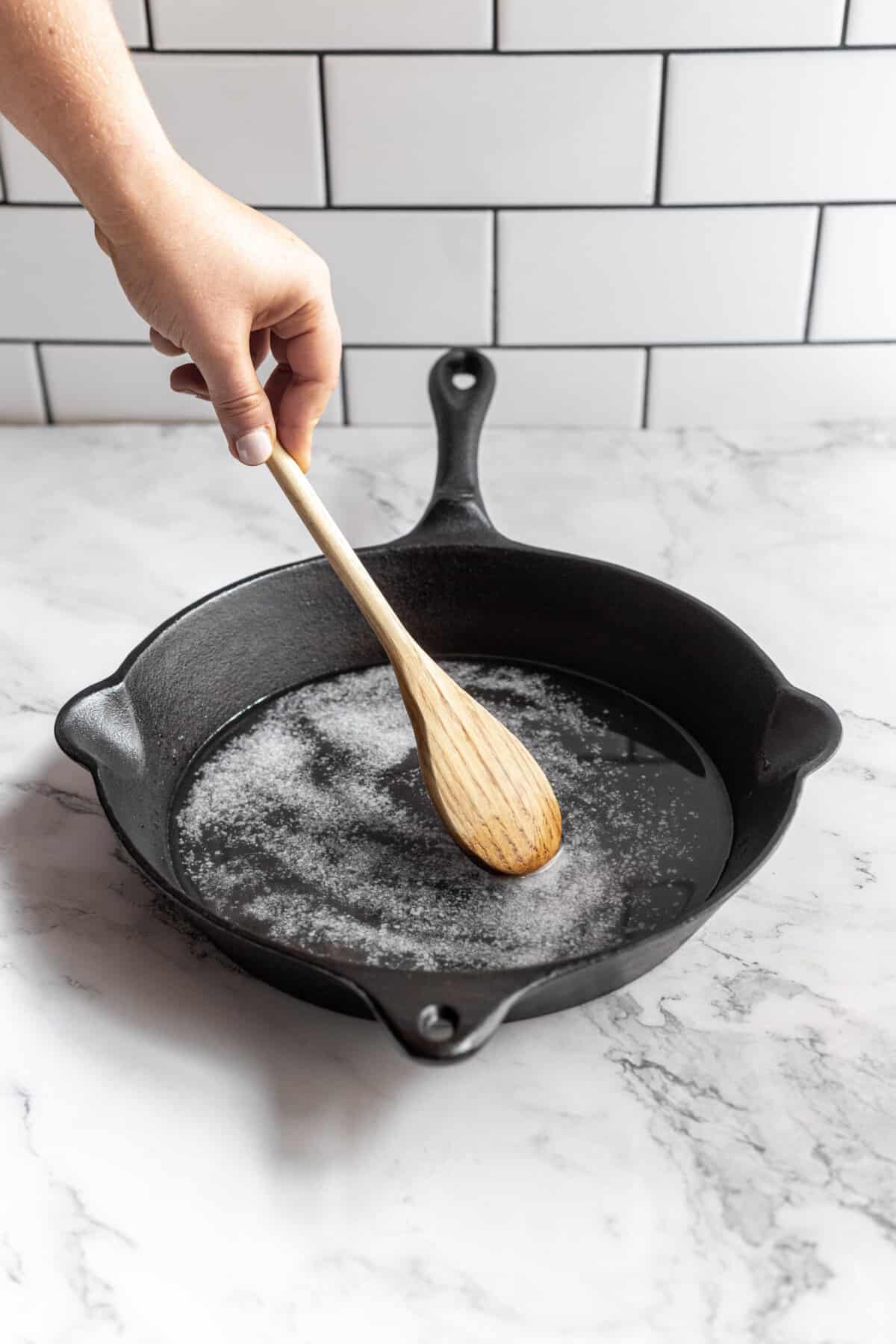
How to Clean a Rusty Cast Iron Pan
There’s no need to throw out a rusty cast iron skillet—it can be saved so you can make Cast Iron Chicken Thighs for dinner again! Here’s what you’ll need to do:
- Soak each rusty piece in one part vinegar and one part water. Cover the entire skillet.
- Test every half hour with a scrub brush to see if the pan is starting to come clean. Soak up to eight hours.
- After scrubbing, rinse thoroughly.
- Dry with the above-mentioned methods and re-season.
- If your pot is heavily rusted, you may have to repeat this process a handful of times.
FAQs
Please don’t. This really isn’t a good idea. Instead, add water to your pan, bring it to a boil, and scrape off any gunk with a spatula.
A little bit of extra seasoning never hurt anyone. It will only prolong your pan’s lifespan and nonstick powers.
Lodge recommends melted shortening, vegetable oil, or other oils with a high smoke point since you will often be heating your pan to high temperatures.
Yes, seasoning a cast iron pan in the oven adds a tougher layer of protection for your pan, strengthening the bond. Wash and dry, add oil, and place on the top rack upside down. Add a baking sheet to the bottom rack, and bake for one hour at 350 degrees Fahrenheit. Allow to cool before removing. This is called “curing” a cast iron pan. Basically, you’re making it like new again.
No! Always wash cast iron pans by hand. A dishwasher will remove the seasoning and result in rust.
When you season and use excess oil, this will result in a sticky residue. Remove the excess oil with hot soapy water, and re-season with a thin layer of oil.
Yes, Dawn is a great mild dish soap that you can use on your cast iron skillet. Use just a small amount of soap, and be sure to wash it off completely. Dry your skillet completely with a paper towel. Then, store it away, nice and clean!
More Helpful Kitchen Tips
Kitchen Tips
How To Grill Vegetables
Best Chicken Recipes
